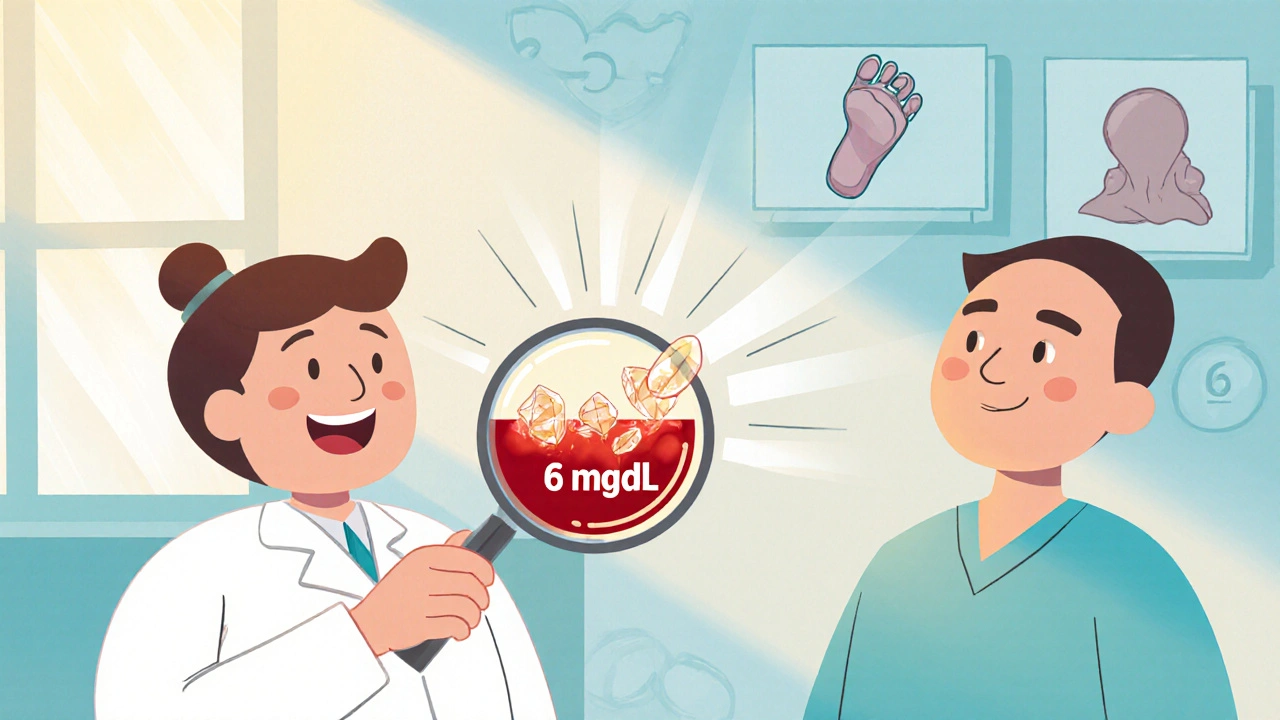Allopurinol: What It Is, How It Works, and What You Need to Know
When your body breaks down purines, it makes uric acid, a waste product that can build up and form sharp crystals in joints, causing painful gout attacks. Also known as a xanthine oxidase inhibitor, allopurinol blocks the enzyme that turns purines into uric acid, helping keep levels low and preventing flare-ups. It’s not a painkiller—you won’t feel instant relief if you’re having a gout attack—but if you take it daily, it stops the cycle before it starts.
Allopurinol is often prescribed for people who get frequent gout attacks, have kidney stones made of uric acid, or are undergoing cancer treatment that causes a sudden spike in uric acid. It’s also used in people with certain types of kidney disease where high uric acid speeds up damage. But it doesn’t work the same for everyone. Some people have genetic differences in how they process it, which can increase the risk of serious skin reactions. That’s why doctors sometimes test for the HLA-B*5801 gene before starting it, especially in people of Asian descent.
One of the biggest risks with allopurinol isn’t the drug itself—it’s what you take with it. Many of the posts here show how common medications can turn dangerous when mixed. For example, azathioprine, an immunosuppressant used for autoimmune conditions, can become toxic when combined with allopurinol because both affect the same liver pathway. Same goes for warfarin, a blood thinner: allopurinol can make it stronger, raising your risk of bleeding. Even common pain meds like NSAIDs, including ibuprofen and naproxen, can stress your kidneys when used long-term with allopurinol. That’s why knowing your full med list matters.
Starting allopurinol can sometimes trigger a gout flare, which is why many doctors begin with a low dose and slowly increase it. Drinking plenty of water helps flush out uric acid and reduces kidney stone risk. You’ll also need regular blood tests to check your uric acid levels and liver function. Most people take it for life, but if your levels stay low for years and you’ve had no attacks, your doctor might consider stopping it—though that’s rare.
What you’ll find below are real-world stories and science-backed guides about how allopurinol fits into the bigger picture of medication safety. You’ll see how it interacts with antibiotics like ciprofloxacin, how genetic testing can change your dosing, and why timing matters when you’re on multiple drugs. These aren’t theoretical discussions—they’re lessons from people who’ve been there, and the doctors who help them stay safe.

